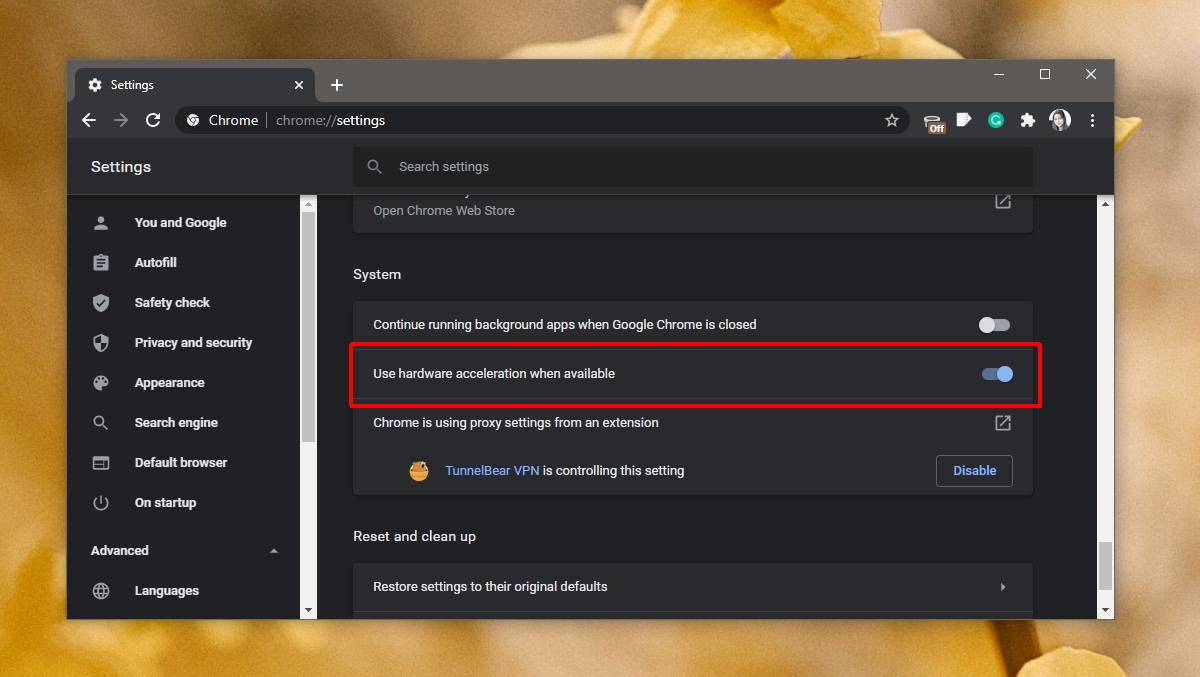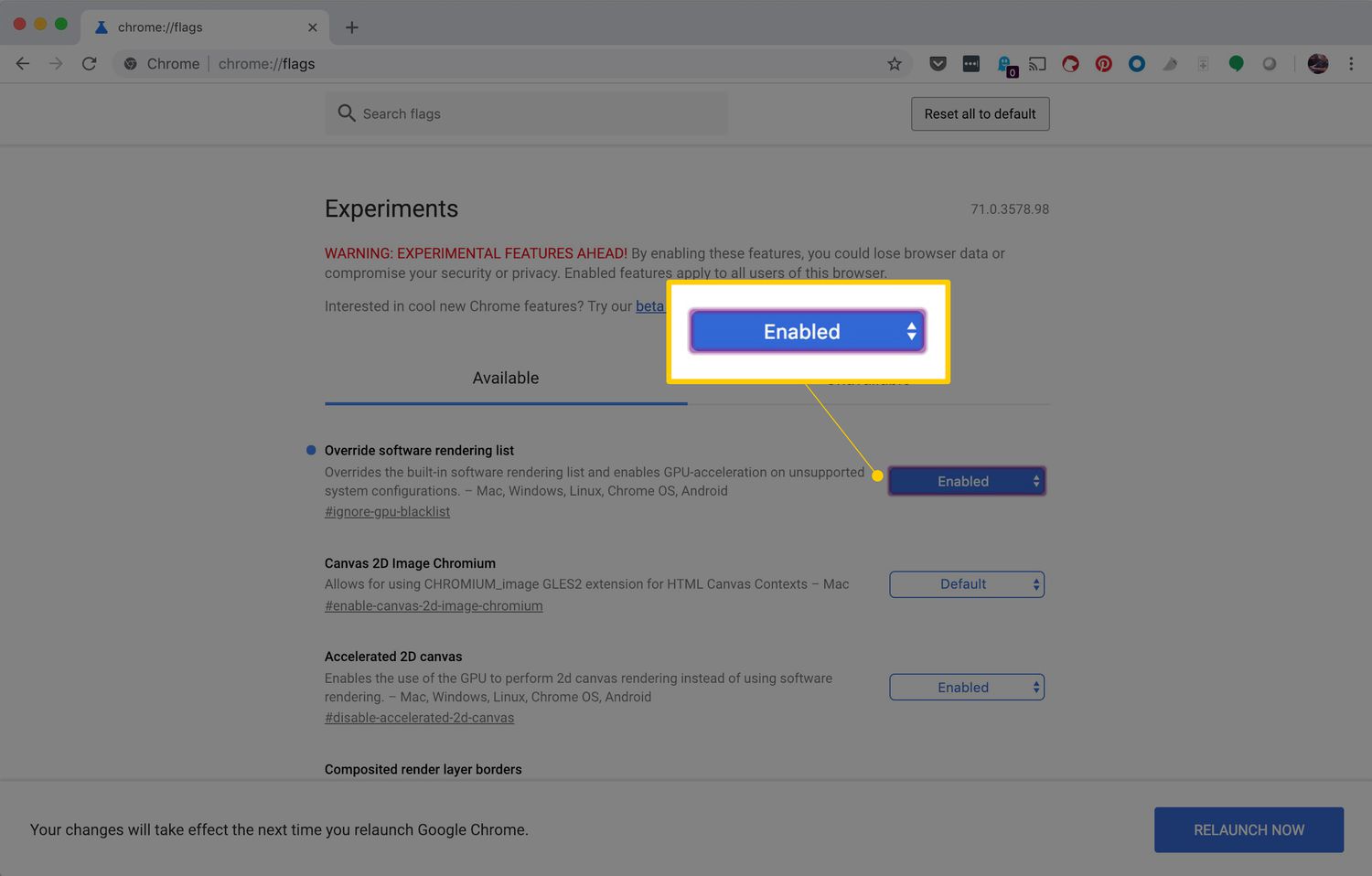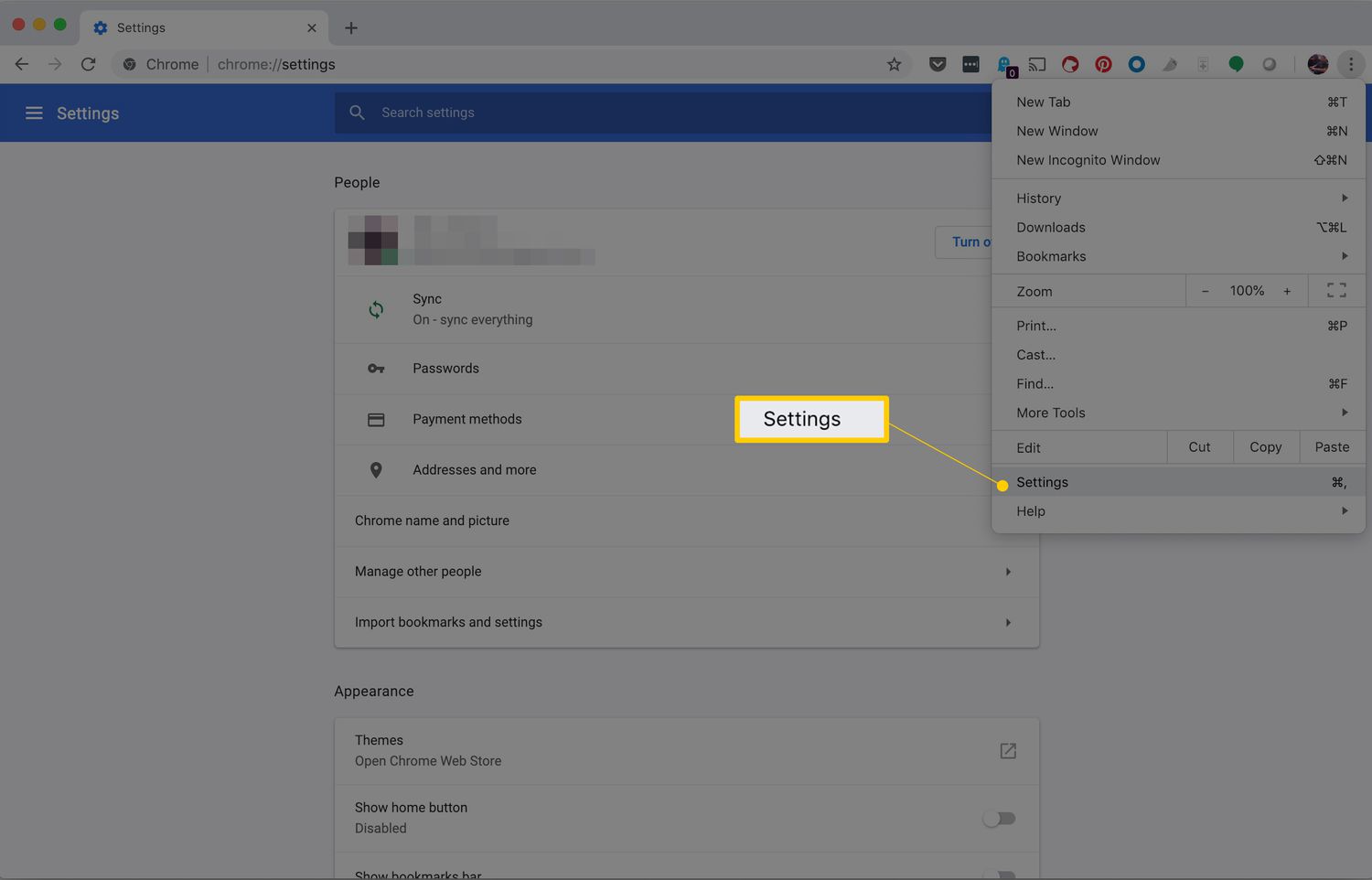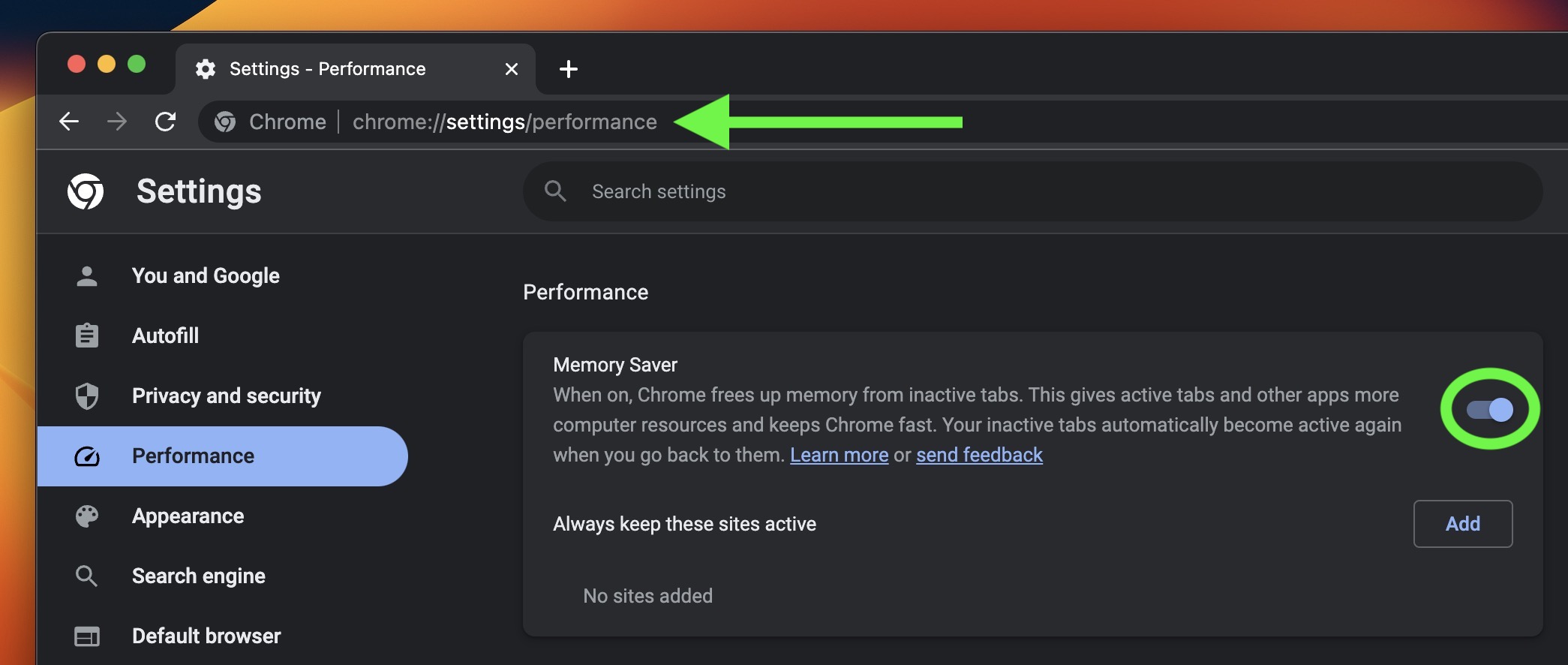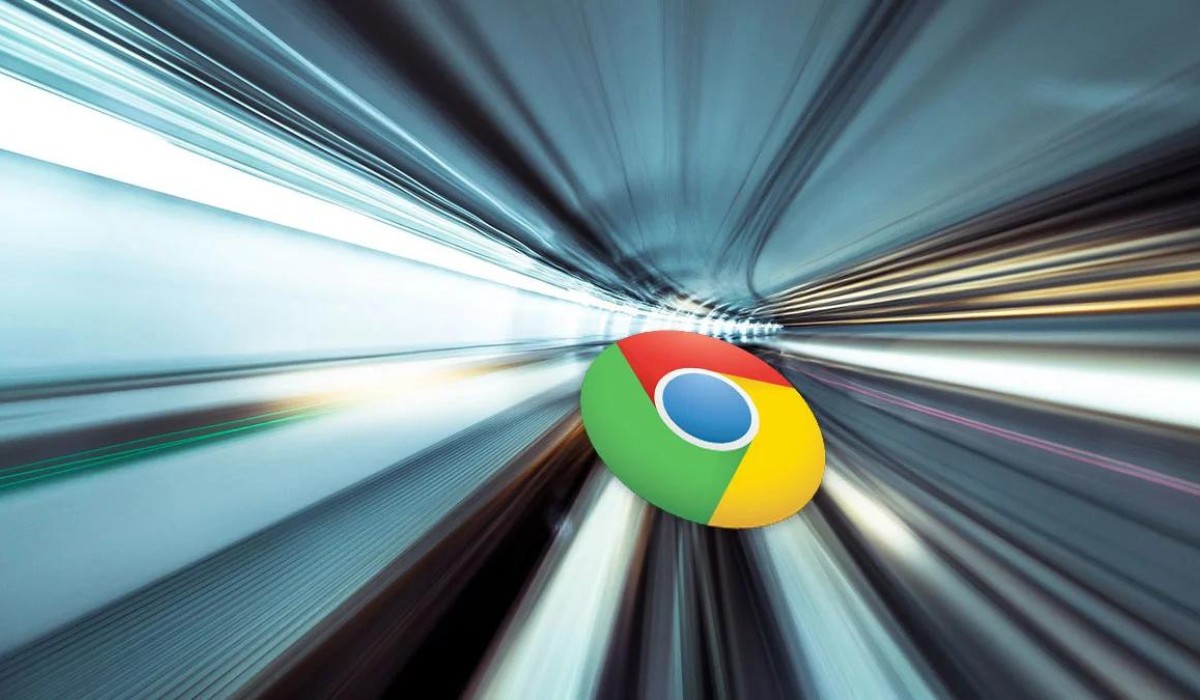Introduction
When it comes to web browsing, speed and performance are paramount. In the world of web browsers, Google Chrome stands out as a popular choice for its user-friendly interface and robust features. One of the key elements contributing to Chrome's swift performance is hardware acceleration. This technology harnesses the power of a device's hardware, such as the GPU, to optimize the rendering of web content, resulting in smoother and more responsive browsing experiences.
As technology continues to advance, web content has become increasingly complex and dynamic. From high-definition videos to interactive web applications, the demand for seamless rendering and fluid animations has surged. This is where hardware acceleration comes into play, offering a solution to enhance the efficiency of web browsing by offloading certain tasks from the CPU to the GPU.
In this article, we will delve into the intricacies of hardware acceleration, exploring its functionality within the Chrome browser. By understanding the inner workings of this technology, users can gain insights into how it elevates their browsing experiences and empowers them to make informed decisions regarding its utilization.
Let's embark on a journey to unravel the mysteries of hardware acceleration and discover how it shapes the way we interact with the web through the Chrome browser.
What is Hardware Acceleration?
Hardware acceleration is a technology that utilizes a device's hardware components, such as the GPU (Graphics Processing Unit), to offload certain tasks from the CPU (Central Processing Unit). In the context of web browsing, hardware acceleration aims to enhance the performance and efficiency of rendering web content by leveraging the parallel processing capabilities of the GPU.
Traditionally, web browsers relied heavily on the CPU to handle various tasks, including rendering web pages, processing complex graphics, and running multimedia elements. However, as web content became more sophisticated and resource-intensive, the CPU alone struggled to deliver seamless and responsive user experiences.
This is where hardware acceleration comes into play, offering a solution to alleviate the burden on the CPU by delegating specific tasks to the GPU. By harnessing the parallel processing power of the GPU, hardware acceleration accelerates the rendering of web content, resulting in smoother animations, faster page load times, and improved overall performance.
In essence, hardware acceleration optimizes the utilization of a device's hardware resources, allowing web browsers like Chrome to deliver a more fluid and visually appealing browsing experience. This technology is particularly beneficial when interacting with multimedia-rich websites, streaming high-definition videos, and engaging with graphics-intensive web applications.
By tapping into the capabilities of the GPU, hardware acceleration unlocks the potential for enhanced visual fidelity, reduced latency, and improved energy efficiency during web browsing. It represents a pivotal advancement in optimizing the utilization of hardware resources to meet the evolving demands of modern web content.
As users continue to engage with increasingly dynamic and immersive web experiences, the role of hardware acceleration becomes increasingly crucial in ensuring that web browsers can deliver optimal performance and responsiveness. Understanding the significance of hardware acceleration provides users with valuable insights into the underlying technology that powers their browsing experiences and empowers them to make informed decisions when configuring browser settings.
How Does Hardware Acceleration Work in Chrome?
When it comes to Chrome, the implementation of hardware acceleration involves leveraging the capabilities of a device's GPU to optimize the rendering of web content. Upon enabling hardware acceleration in Chrome, certain tasks that were traditionally handled by the CPU are offloaded to the GPU, allowing for parallel processing and efficient utilization of hardware resources.
Under the hood, when a web page is loaded in Chrome, the browser's rendering engine, Blink, works in conjunction with the GPU to accelerate the processing of visual elements. This collaboration between the CPU and GPU enables Chrome to swiftly render complex graphics, animations, and multimedia content, resulting in a more responsive and visually engaging browsing experience.
By harnessing the parallel processing power of the GPU, Chrome can seamlessly handle tasks such as compositing layers, rendering 2D and 3D graphics, and decoding multimedia elements. This offloading of tasks from the CPU to the GPU not only enhances the performance of Chrome but also contributes to reducing the strain on the CPU, leading to improved energy efficiency and overall system responsiveness.
Furthermore, Chrome's hardware acceleration is designed to adapt dynamically to the demands of web content, ensuring that the GPU's capabilities are effectively utilized to deliver smooth and fluid rendering. Whether it's navigating through graphically intensive web applications, streaming high-definition videos, or interacting with dynamic visual elements, hardware acceleration in Chrome plays a pivotal role in elevating the browsing experience.
It's important to note that the effectiveness of hardware acceleration in Chrome is contingent on the compatibility and capabilities of the underlying hardware. Devices equipped with powerful GPUs are poised to benefit the most from hardware acceleration, as they can efficiently handle the rendering of complex visual elements, resulting in enhanced performance and visual fidelity.
In essence, hardware acceleration in Chrome represents a symbiotic relationship between the CPU and GPU, where the parallel processing prowess of the GPU is harnessed to optimize the rendering of web content. This collaborative effort between hardware components culminates in a browsing experience characterized by smooth animations, swift page loads, and visually captivating web interactions.
By understanding the inner workings of hardware acceleration in Chrome, users can appreciate the technological underpinnings that drive the browser's performance and gain insights into how hardware acceleration enhances their browsing experiences. This knowledge empowers users to make informed decisions when configuring hardware acceleration settings in Chrome, ultimately shaping the way they interact with the web through the browser.
Benefits of Hardware Acceleration in Chrome
Hardware acceleration in Chrome yields a myriad of compelling benefits that significantly enhance the browsing experience. By harnessing the parallel processing capabilities of the GPU, hardware acceleration optimizes the rendering of web content, resulting in tangible advantages for users.
1. Enhanced Visual Fidelity:
Hardware acceleration elevates the visual quality of web content displayed in Chrome. Complex graphics, animations, and multimedia elements are rendered with greater precision and fluidity, enhancing the overall visual appeal of websites and web applications. This heightened visual fidelity contributes to a more immersive and engaging browsing experience, particularly when interacting with multimedia-rich content.
2. Improved Performance:
The offloading of certain tasks from the CPU to the GPU through hardware acceleration leads to improved performance in Chrome. Web pages load more swiftly, and the responsiveness of the browser is notably enhanced. Users experience smoother transitions, faster animations, and reduced latency when navigating through web content, culminating in a seamless and efficient browsing experience.
3. Energy Efficiency:
By leveraging the GPU for rendering tasks, hardware acceleration in Chrome contributes to improved energy efficiency. Offloading graphics-intensive operations from the CPU to the GPU results in reduced power consumption, particularly on devices with integrated graphics solutions. This not only benefits battery life on mobile devices but also promotes energy-conscious computing on desktop systems.
4. Optimal Utilization of Hardware Resources:
Hardware acceleration ensures that a device's GPU is effectively utilized to handle the rendering of web content in Chrome. This optimal utilization of hardware resources results in a balanced distribution of processing tasks, with the GPU seamlessly handling graphics-intensive operations while the CPU focuses on other essential computations. As a result, the overall system performance is optimized, and users can leverage the full potential of their hardware when browsing the web.
5. Support for Advanced Web Technologies:
With hardware acceleration enabled in Chrome, users gain access to enhanced support for advanced web technologies. This includes improved performance when interacting with WebGL applications, smoother video playback, and seamless rendering of complex visual effects. Hardware acceleration paves the way for a more immersive and dynamic web experience, enabling users to engage with cutting-edge web content seamlessly.
In essence, the benefits of hardware acceleration in Chrome encompass an amalgamation of visual, performance, and efficiency enhancements that collectively elevate the browsing experience. By leveraging the capabilities of the GPU, Chrome delivers a seamless and visually captivating web browsing experience, empowering users to interact with modern web content with unparalleled fluidity and responsiveness.
How to Enable or Disable Hardware Acceleration in Chrome
Enabling or disabling hardware acceleration in Chrome is a straightforward process that allows users to customize their browsing experience based on their hardware capabilities and preferences. Whether seeking to optimize performance on high-end systems or troubleshoot compatibility issues on certain devices, the ability to toggle hardware acceleration settings provides users with flexibility and control over their browsing environment.
To enable or disable hardware acceleration in Chrome, follow these simple steps:
Enabling Hardware Acceleration:
- Open Google Chrome and click on the three-dot menu icon located in the top-right corner of the browser window.
- From the dropdown menu, select "Settings" to access the browser's configuration options.
- Scroll down and click on "Advanced" to reveal additional settings and features.
- Within the "System" section, locate the "Use hardware acceleration when available" option.
- Toggle the switch next to the option to enable hardware acceleration in Chrome.
Once hardware acceleration is enabled, Chrome will leverage the GPU to accelerate the rendering of web content, leading to enhanced performance and visual fidelity.
Disabling Hardware Acceleration:
- If necessary, follow the same initial steps to access Chrome's settings by clicking on the three-dot menu icon and selecting "Settings."
- Navigate to the "Advanced" section within the settings menu.
- Locate the "Use hardware acceleration when available" option under the "System" category.
- Toggle the switch next to the option to disable hardware acceleration in Chrome.
By disabling hardware acceleration, Chrome will revert to utilizing the CPU for rendering tasks, which may be beneficial in troubleshooting compatibility issues or conserving system resources on certain devices.
It's important to note that the availability of hardware acceleration settings may vary based on the operating system and Chrome version. Additionally, users should consider the specific hardware capabilities of their devices when making decisions regarding hardware acceleration. High-performance systems with dedicated GPUs are well-suited to leverage hardware acceleration for optimal browsing experiences, while devices with limited graphics capabilities may benefit from disabling hardware acceleration to ensure compatibility and stability.
By offering the ability to enable or disable hardware acceleration, Chrome empowers users to tailor their browsing environment to align with their hardware capabilities and preferences, ultimately shaping a personalized and optimized web browsing experience.
Common Issues with Hardware Acceleration in Chrome
While hardware acceleration in Chrome is designed to enhance the browsing experience, it can occasionally give rise to certain issues that users may encounter. Understanding these common issues is crucial for troubleshooting and optimizing the performance of the browser.
-
Graphics Glitches and Rendering Artifacts: In some cases, enabling hardware acceleration in Chrome may lead to graphics glitches or rendering artifacts, manifesting as visual distortions, flickering, or incomplete rendering of web content. These issues can detract from the overall browsing experience and may stem from compatibility issues with specific GPU drivers or hardware configurations.
-
Video Playback Problems: Users may encounter issues with video playback when hardware acceleration is enabled in Chrome. This can result in stuttering, freezing, or out-of-sync audio and video during streaming or local video playback. Such issues may arise due to conflicts between hardware acceleration and certain video codecs or drivers.
-
Browser Crashes and Instability: Hardware acceleration has the potential to contribute to browser crashes and instability, particularly on systems with incompatible or outdated GPU drivers. Users may experience frequent Chrome crashes or unresponsiveness when hardware acceleration is enabled, necessitating troubleshooting to identify and address the underlying causes.
-
Performance Degradation on Certain Hardware: While hardware acceleration is intended to improve performance, it may have the opposite effect on certain hardware configurations. Devices with older or less capable GPUs may experience performance degradation, including slower page loads, increased system resource utilization, and reduced overall responsiveness when hardware acceleration is enabled.
-
Compatibility Issues with External Displays: Users connecting their devices to external displays or utilizing multiple monitors may encounter compatibility issues related to hardware acceleration. This can result in display anomalies, resolution discrepancies, or visual artifacts when Chrome is used across multiple screens, necessitating adjustments to hardware acceleration settings or GPU configurations.
-
Impact on Battery Life (Mobile Devices): On mobile devices, enabling hardware acceleration in Chrome may have implications for battery life. While hardware acceleration can enhance performance, it may lead to increased power consumption, impacting the device's battery life during prolonged browsing sessions.
Addressing these common issues with hardware acceleration in Chrome involves a combination of troubleshooting steps, such as updating GPU drivers, adjusting hardware acceleration settings, and identifying potential conflicts with specific web content or extensions. By recognizing these challenges, users can proactively address issues related to hardware acceleration, ensuring a smoother and more stable browsing experience in Chrome.
Conclusion
In conclusion, hardware acceleration stands as a pivotal technological advancement that significantly influences the browsing experience within the Chrome browser. By harnessing the parallel processing capabilities of the GPU, hardware acceleration optimizes the rendering of web content, leading to enhanced visual fidelity, improved performance, and efficient utilization of hardware resources. The seamless collaboration between the CPU and GPU empowers Chrome to deliver a visually captivating and responsive browsing experience, particularly when interacting with multimedia-rich websites, dynamic web applications, and high-definition content.
The benefits of hardware acceleration in Chrome extend beyond mere performance enhancements, encompassing energy efficiency, support for advanced web technologies, and optimal utilization of hardware resources. Users can revel in the heightened visual quality, swift page loads, and reduced power consumption facilitated by hardware acceleration, ultimately shaping a browsing environment characterized by fluid animations, seamless video playback, and immersive web interactions.
However, it is essential to acknowledge the potential challenges associated with hardware acceleration, including graphics glitches, video playback issues, and compatibility concerns on certain hardware configurations. By recognizing these common issues, users can navigate potential obstacles and leverage troubleshooting strategies to optimize the performance and stability of hardware acceleration in Chrome.
The ability to enable or disable hardware acceleration in Chrome empowers users to tailor their browsing environment to align with their hardware capabilities and preferences, fostering a personalized and optimized web browsing experience. Whether seeking to maximize performance on high-end systems or troubleshoot compatibility issues on specific devices, users can leverage hardware acceleration settings to shape their browsing experiences according to their unique needs.
As technology continues to evolve and web content becomes increasingly dynamic and immersive, hardware acceleration remains a cornerstone of Chrome's ability to deliver seamless and visually captivating browsing experiences. By understanding the intricacies of hardware acceleration and its impact on the browsing environment, users can make informed decisions when configuring hardware acceleration settings, ultimately shaping the way they interact with the web through the Chrome browser.







